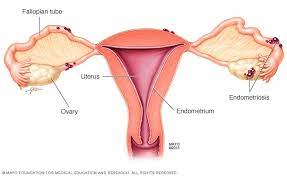Endometriosis, a common gynecological disorder affecting millions of women worldwide, is characterized by the presence of endometrial-like tissues outside the uterus, leading to chronic pain and infertility. Despite its prevalence, the precise mechanisms underlying the disease remain unclear, and current treatment options remain limited. However, a recent study has uncovered a potential molecular target that could lead to novel therapeutic interventions.
The Role of PAK5 in Endometriosis Progression
New research published in Frontiers of Medicine has identified P21-activated kinase 5 (PAK5) as a key player in the progression of endometriosis. The study highlights that PAK5-mediated phosphorylation of pyruvate kinase M2 (PKM2) is crucial for anaerobic glycolysis in endometriotic cells, a process that fuels cell proliferation and disease advancement.
The study investigated the impact of PAK5 on key cellular functions such as proliferation, migration, and invasion in endometriotic cells. Researchers discovered that PAK5 enhances these processes in endometrial epithelial cells, pointing to its significant role in disease progression. Additionally, they examined how PAK5 interacts with PKM2, an enzyme essential for glycolysis, and found that PAK5 promotes PKM2 protein stability by phosphorylating it at the Ser519 site.
Experimental Insights and Potential Treatments
To explore these findings, the researchers conducted extensive laboratory experiments, including cell culture analyses, tissue collection, and immunohistochemical assays. The results revealed that overexpression of PAK5 led to increased PKM2 levels and heightened glycolytic activity, thereby promoting the growth of endometriotic cells. Conversely, knocking down PAK5 resulted in reduced PKM2 levels and a decline in cellular proliferation and migration.
The study also tested the potential of a small-molecule PAK inhibitor, GNE 2861, to curb the proliferation and migration of endometriotic cells. This experiment provided compelling evidence that targeting the PAK5-PKM2 axis could be a viable therapeutic strategy for treating endometriosis.
Implications for Future Treatments
These groundbreaking findings contribute to a deeper understanding of the molecular mechanisms of endometriosis and present PAK5 as a promising therapeutic target. By modulating PAK5 activity, researchers could potentially regulate PKM2-mediated glycolysis, offering a new approach to managing this debilitating condition.
While further clinical studies are required to validate these findings, this research represents a significant step toward the development of targeted therapies for endometriosis. If successful, such treatments could improve the quality of life for millions of women affected by the condition.
Reference
Jiayi Lu et al, “PAK5-mediated PKM2 phosphorylation is critical for anaerobic glycolysis in endometriosis,” Frontiers of Medicine (2024). DOI: 10.1007/s11684-024-1069-3
Disclaimer
This article is intended for informational purposes only and does not constitute medical advice. Readers should consult healthcare professionals for medical guidance regarding endometriosis diagnosis and treatment.












